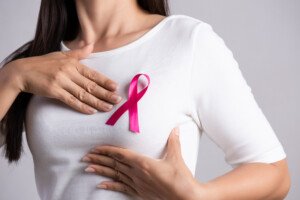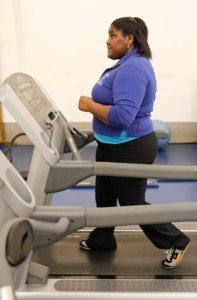A woman can make two lifestyle changes that will prominently help reduce risk of breast cancer recurrence plus reduce mortality.
Many survivors of breast cancer have a recurrence – which can occur many years after being given the “all clear.”
For some survivors, they live a life of waiting for that other shoe to drop. They know all too well that “it can come back.”
As ominous as this sounds, there are two things a woman can do that can have a mighty impact on the risk of a breast cancer recurrence.
The first change that a woman can make to her lifestyle is to incorporate regular exercise into her life — and this comes with a huge qualifier:
There is no such thing as built-in exercise in the form of housework or “chasing after the kids.”
“Regular exercise modestly protects against breast cancer, especially in postmenopausal women,” says Jennifer Hartman, a clinical nurse practitioner specializing in breast health, women’s health and cancer genetics.
“This is mostly due to its role in maintaining a healthy weight and reducing estrogen exposure.”
However, if a woman is not overweight, and even if she was never overweight, exercise is a powerful way to reduce the risk of a recurrence of this disease.
Never, ever assume that exercise won’t help much if you’re on the slender side or have never been an ounce overweight.
Working out has a strong protective effect against the return of breast cancer in women of all sizes.
A report in the Canadian Medical Association Journal (Feb. 2017) names exercise the single most important factor in lowering the risk of a recurrence.
The researchers’ conclusions are based on an analysis of 67 published papers.
Next on the list is body weight control.
A gain of fat more than 10% of a woman’s body weight, after a breast cancer diagnosis, raises BC mortality — but also all-cause mortality.
Obesity is definitely a strike against lowering a favorable longterm outcome following breast cancer treatment.
“Obesity has been shown in studies to increase the risk of hormone-positive breast cancer in postmenopausal women as well as lead to higher rates of mortality and even an increased risk of a second breast cancer,” says Hartman.
“There are several explanations for this. Most breast cancers are stimulated by estrogen — and increased fat tissue leads to an increase in circulating estrogen.
“Additionally, increased fat tissue is linked with insulin resistance and increased inflammation which both increase tumor cell growth.”
Another change that survivors can make is to quit drinking alcohol. As for a maxium daily intake for those who have no intention of quitting, it’s four ounces per day — regardless of type of drink.
Exercise
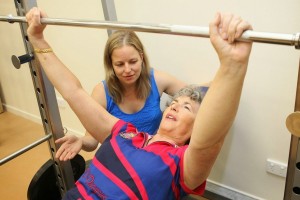
• Do half an hour or more a day of moderate exercise, five days a week. Housework and childcare do not count.
Exercise should be structured, systematic and planned so that there are no interruptions or distractions, and so that one can also implement proper form.
The report encourages strength training as part of the program. Strength training should be in the form of exercises that hits large muscle groups such as the bench press, leg press, a variation of squatting, pulling movements and the deadlift. Two to three sessions per week are recommended.
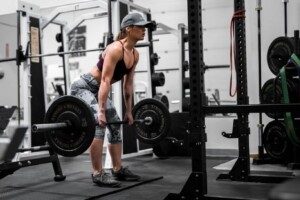
Anastase Maragos on Unsplash
• Or, you can do 75 minutes of vigorous activity per week, such as brisk hiking up hills or a high-energy group fitness class.
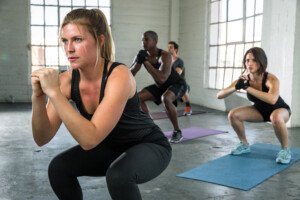
Shutterstock/El Nariz
Strength Training
- Learn to master proper form and technique.
- If you’re thinking of hiring a personal trainer, make sure it’s one who does not encourage conversation during the actual strength training set. As a former personal trainer, I’ve seen too many trainers having their clients yak and yak during a set.
- Lifting weights is something to be taken seriously, in which focus, correct form and breathing techniques are very important. If you can yak while lifting weights, you’re not working hard enough, and your concentration will be compromised.
Aerobics
- This can include cardio equipment.
- If you use a treadmill, do not hold on other than for momentary balance checks. Start slowly to get used to the moving tread.
- Swing your arms naturally. Holding on skewers posture and can result in tight upper back muscles or a repetitive stress injury to the hips.

